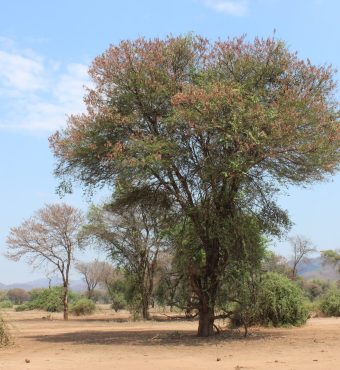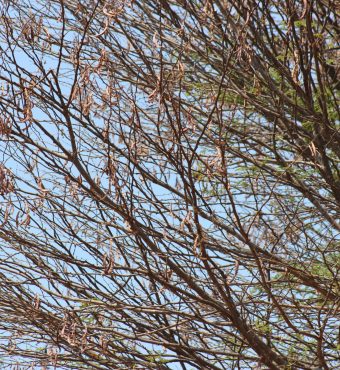

Botanical Name: Acacia robusta Burch. subsp. robusta
Common Name: Robust Acacia
Plant Family: Mimosoideae
Origin: Africa
References: Coates Palgrave p.297, Timberlake et.al. p.112-113, Dharani p.142-145. S.A. No. 183, Zimb. No. 221
Description: Small to medium-sized deciduous tree with dark brown, deeply fissured stem and spiny branches. Thorns are grey, large, slight curved and paired (2-10cm). Bipinnate leaves with up to 20 pairs of large (5mm) grey-green leaflets on a 5cm stem. Flower a white ball appearing with new leaves. The fruit a stout, woody, straight, brown pod (up to 15cm long) that is partly dehiscent (pods split).
Features of Particular Interest: Tree shape and white flowers.
Height and Spread: 6m – 8m high, 3m – 5m spread.
Periods of Interest:
Leaf: September to May
Flowering: August to October.
Fruiting: November to June.
Bark: All year round.
Cultivation
Soil and Moisture: Acacia robusta occurs in a variety of soils. Plant in full sun or semi shade and water regularly. It is drought resistant.
Aspect: Tolerant of growing situations but enjoys an open location.
Hardiness: Drought tolerant once established.
Maintenance and Pruning: Not required.
Propagation: Acacia robusta is relatively easy to germinate. The seed should be planted with a light sand/soil cover and watered regularly. Transplant into larger bags when several leaf have appeared.
Problems and Drawbacks: Roots not known to be intrusive, but it will lose its leaves in winter, so do not plant near swimming pools.
Use and Associated Planting: Specimen or in a group of 3 or 5 in a large garden.
